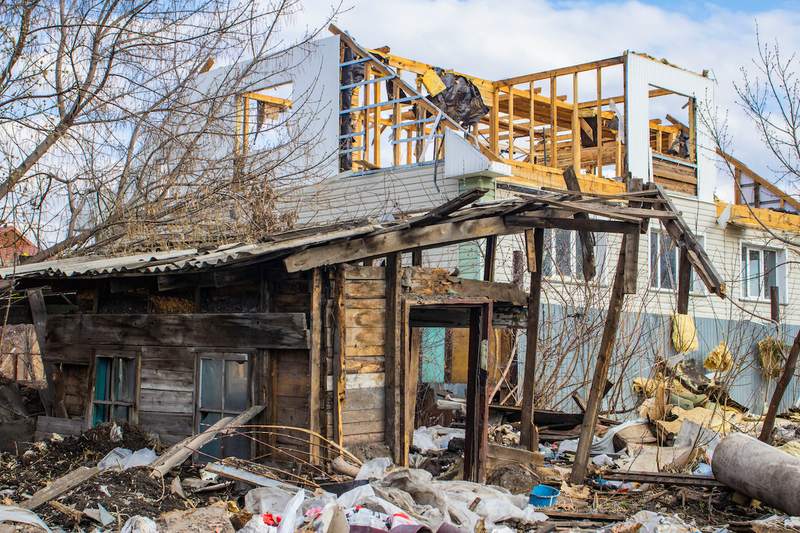Mortgage refinancing offers homeowners many financial advantages, such as lowering the interest rate, changing the length of the loan, or making the monthly payment more affordable. Refinancing is especially attractive when interest rates drop, or when homeowners want to borrow some of their equity with a cash-out refinance.
Getting a mortgage refinance is a similar process to taking out the mortgage you used to buy your home. It often includes an appraisal of the property, which plays a big role in the lender’s decision to approve the loan and what terms it will offer.
The higher your appraisal, the better. So, here’s how refinance appraisals work, and how you can prepare to get the best result:
- What Is a Refinance Appraisal and How Does It Work?
- Types of Refinance Appraisals
- Do You Need an Appraisal To Refinance?
- Preparing For a Mortgage Refinance Appraisal
- Home Appraisal Tips for Refinancing
- How Long After an Appraisal Does It Take To Close On a Refinance?
- FAQ: Preparing For Your Home Appraisal
- The Bottom Line on Preparing For a Refinance Home Appraisal
What Is a Refinance Appraisal and How Does It Work?
The good news is that you should already know what to expect for a refinance appraisal. It’s essentially the same as the appraisal made when you bought your home. A third-party professional will inspect the property and estimate its current market value, taking into consideration its condition, features, and location, and the recent sales of comparable homes in the same area. The process can involve internal and external inspections of the home, and take several hours.
Mortgages are secured by the property, meaning if you default and cannot repay the loan, the lender can foreclose on the home and sell it to recoup its costs. To limit their risks, mortgage lenders need to know what a home is worth so they can ensure the loan matches the property’s value. That’s why an appraisal is needed for a refinance.
For example, a lender will not approve a loan of $500,000 for property that is worth $100,000, because if it has to foreclose on that loan, it will be unable to recoup its loss by selling the property.
Who pays for a refinance appraisal?
The homeowner or buyer typically pays for the appraisal, either upfront or as part of the closing costs. The cost of an appraisal can vary, but is usually between $300 and $600.
Types of Refinance Appraisals
There are other types of appraisal options when you’re refinancing a mortgage, including:
- Drive-by appraisal. In this type of appraisal, the appraiser only looks at the exterior of the home. The name comes from how they can feasibly conduct the appraisal while driving past the home.
- Desktop appraisal. During a desktop appraisal, the appraiser uses information about the home — such as lot size, home dimensions, and a floor plan — to determine its value. The appraiser never physically visits or examines the property.
- Hybrid appraisal. Hybrid appraisals combine features of desktop appraisals and appraisals that involve visiting the home, and may employ a third party for an interior or exterior observation of the property.
- No-appraisal refinance. Some refinance programs — like Federal Housing Administration streamline refinancing, Veterans Affairs interest rate reduction refinance loans, and Department of Agriculture streamline refinancing — don’t require appraisals. However, these programs have other eligibility requirements, such as military service or having an existing FHA loan.
Refinance appraisal vs. home inspection
Appraisals and inspections can both involve someone visiting and examining your home. However, the person conducting the examination will be looking for different things.
An appraiser is primarily concerned with determining the value of your home. They will look to make sure the home is in good condition, but they will also look for things like the size of the home, how the space is used, the type of fixtures, and anything else that will influence what people might pay for it.
A home inspection checks the condition of the home and whether it’s safe to live in, and identifies any repairs that are required. The inspector won’t be trying to determine the value of the home.
Do You Need an Appraisal To Refinance?
You don’t always need an appraisal to refinance. If you’re getting a cash-out refinance that increases the amount you owe, expect your lender to require an appraisal. But if you’re doing a rate-and-term refinance, your lender may let you skip the appraisal — especially if you have a lot of equity in your home.
Certain government-backed loan programs — such as those offered by the FHA, VA, and USDA — offer streamline refinances that do not require a new appraisal but may levy other fees.
Refinancing without an appraisal can have its downsides. For example, an appraisal may help you clear the 20% equity requirement to avoid private mortgage insurance, especially if property values have increased since you got your first loan. Showing that you have more equity also could help you qualify for a lower interest rate.
Preparing For a Mortgage Refinance Appraisal
When inspecting your home, the appraiser looks at every aspect of your property. If you know what to expect, you can prepare for the appraisal so that your home appraises for the highest possible value.
What do home appraisers look for when refinancing?
Appraisers consider many different factors when examining a home for a refinance.
“It’s important to keep in mind that external factors, including real estate comparable listings, can heavily influence the home’s value,” says Leslie Tayne, a financial attorney based in New York.
Other factors — like the size of the home, the number of bedrooms, and how recently things like the kitchen have been updated — also play a role, Tayne says.
Some common factors that appraisers look for include:
- Comparable sales in the area. The value of your home is likely to be close to the sales price of homes in your area, especially if they’re similar in size, the number of bedrooms, etc.
- Size of the home. Typically, larger homes are worth more than smaller ones.
- Floor plan. The floor plan of your home can make a big difference in its value. Appraisers will look to make sure the space is used well.
- Number of bedrooms. Homes with a greater number of bedrooms are usually worth more.
- Recent home improvements. Home improvements can help increase property value because future repairs or maintenance costs will typically be lower.
- Condition of the interior and exterior. Generally, the nicer a home looks, the more a buyer will be willing to pay for it, which can improve your appraisal. A home that is in poor condition may have higher maintenance costs, which can drive down its value.
- Condition of utilities. Appraisers will make sure that all the essential utilities are in working order.
- Location of the home. Real estate is all about location. Homes in desirable areas with good school districts or near cities tend to see higher appraisals than homes in less desirable areas.
- Comfort and safety. This can be subjective, but homes that appear safer and more comfortable to live in may see higher appraisals.
Does the appraiser know the refinance amount?
Generally, yes. Most lenders will provide transaction or financing information to appraisers.
One reason why appraisers get this information is because home values are subjective. How much you’re asking to finance the home for is a point in favor of the home being worth at least that much.
Disclosing loan details to the appraiser is required for some types of mortgages, such as loans that conform to Fannie Mae guidelines.
Home Appraisal Tips for Refinancing
When you’re refinancing your home and getting it appraised, you should do your best to make your home appealing. Even something as simple as cleaning up or having a well-maintained front lawn can make a difference in the appraiser’s impression.
Tips for getting a higher appraised value
The higher your home’s appraised value, the better your chances are of getting approved for a refinance. Here’s how to prepare for an appraisal for refinancing, and increase your home’s appraised value:
- Improve curb appeal. The exterior of your home is the first thing that the appraiser will see. First impressions are key, so mow the lawn, do some landscaping, and consider power-washing the driveway to make the home look more appealing.
- Tidy up the interior. Turning on the lights and cleaning up the inside of your home can make it more inviting and feel more spacious.
- Do a trial run. Check over your home by opening and closing the windows, testing appliances, and making sure everything works. This gives you the opportunity to fix problems before the appraiser comes.
- Show proof of investments. If you’ve put money into your home by paying for major maintenance or making upgrades, you can show receipts, which may help convince the appraiser of the home’s value.
- Ask for a local appraiser. Your lender will choose the appraiser, but requesting a local one is typically a good idea. They will have the most knowledge of your neighborhood and be able to offer the most accurate assessment of your home’s value.
- Make minor improvements if necessary. Even small things like fixing a squeaky door can make your home seem like it’s in good condition and help improve its value.
Tips for when your appraisal comes back low
If your appraisal comes back lower than expected, you can request a reappraisal of your house. Tayne recommends homeowners stand up for themselves and ask their lender for a do-over.
“Look for recent comps to provide to the appraiser that show similar homes, and how yours justifies the higher appraisal,” she says.
Disputing an appraisal
You can dispute an appraisal that comes back lower than expected. Good reasons to dispute an appraisal include inaccuracies in the report, such as the appraiser incorrectly counting the number of rooms, or if you think they didn’t properly compare your home to other similar properties.
When disputing an appraisal, provide a short explanation of why you’re asking the appraiser to reconsider. Make fact-based arguments, and avoid mentioning your estimation of the home’s value. Provide some examples of comparable homes in your area, a sketch of the floor plan, and any other supporting documentation you think may be valuable.
Paying the difference in closing costs
Lenders order appraisals to make sure the home is worth enough to secure the mortgage. If the appraisal is off by a small amount, you can pay the difference at closing to reduce the loan’s balance to the point that the lender is comfortable with the loan amount compared to the home’s value.
Waiting until home values go up
Historically, homes tend to gain value over time. If your home appraises for too little, you might be able to refinance in a year or two once the home goes up in value. You can keep an eye on comps in your neighborhood to see if sale prices start to trend higher.
What happens when my appraisal is higher than expected?
This is great news because it means your home is worth more than you thought. Your lender will have fewer concerns about offering the loan because your home is worth enough to serve as collateral.
If the appraisal is much higher than expected, then it may mean you’ll have enough equity to secure a lower interest rate or avoid additional costs like PMI.
How Long After an Appraisal Does It Take To Close On a Refinance?
The appraisal usually comes in the middle of the lending process, after your lender has examined your financial information. Overall, that means your loan should close a week or two after the appraisal.
FAQ: Preparing For Your Home Appraisal
Here are some answers to a couple of frequently asked questions about refinance appraisals.
Technically, appraisals shouldn’t be affected by some clutter and dust. But appraisals aren’t an exact science. Cleanliness makes the appraisal easier and gives the appearance of a well-kept home. In this way, a clean home can positively influence your appraisal.
Appraisals don’t check mechanical systems or appliances, so an appraiser shouldn’t look into your refrigerator. Appraisers are, however, required to view accessible attic spaces. This doesn’t mean they will climb into the spaces, but they can remove any personal items or insulation that block visibility. The same is true for closets.
The Bottom Line on Preparing For a Refinance Home Appraisal
Knowing what to expect during a home refinance appraisal gives you time to prepare your home. If you put in some effort, you could boost your home’s appraised value. That can help you stop paying for PMI, or show that you have enough equity for a lower interest rate. Because you gain a lot from a good appraisal, proper preparation may save you a lot of money in the long run.






